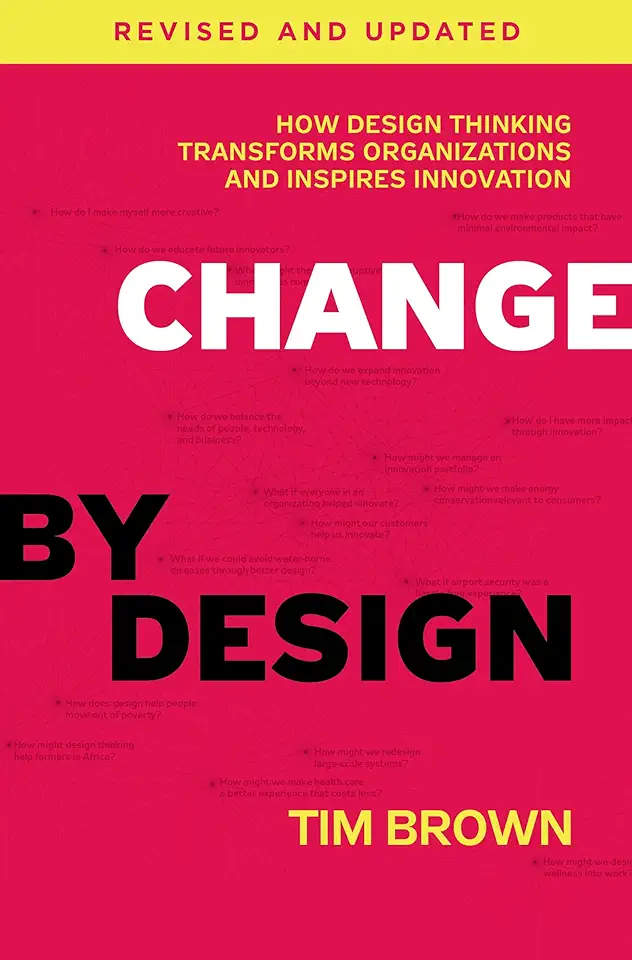
Change By Design - Tim Brown
Change by Design: How Design Thinking Transforms Organizations and Inspires Innovation
In a world that is constantly changing, organizations need to be able to adapt and innovate in order to stay ahead of the competition. Design thinking is a powerful tool that can help organizations do just that. It is a human-centered approach to problem-solving that emphasizes empathy, creativity, and collaboration.
What is Design Thinking?
Design thinking is a process that can be used to solve a wide variety of problems, from small-scale challenges to large-scale organizational transformations. It is based on the belief that the best solutions come from understanding the needs of the people who will be affected by them.
The design thinking process typically involves five stages:
- Empathize: This stage is about understanding the needs of the people who will be affected by the problem you are trying to solve. This can be done through research, interviews, and observation.
- Define: This stage is about defining the problem you are trying to solve. This should be done in a clear and concise way so that everyone involved can understand it.
- Ideate: This stage is about generating as many ideas as possible for solving the problem. This can be done through brainstorming, mind mapping, and other creative techniques.
- Prototype: This stage is about creating a prototype of your solution. This can be a physical prototype, a digital prototype, or even a role-playing scenario.
- Test: This stage is about testing your prototype with the people who will be affected by it. This can be done through user testing, usability testing, and other feedback mechanisms.
The Benefits of Design Thinking
Design thinking can provide a number of benefits for organizations, including:
- Increased innovation: Design thinking helps organizations to generate new and innovative ideas for solving problems.
- Improved customer experience: Design thinking helps organizations to create products and services that meet the needs of their customers.
- Reduced costs: Design thinking can help organizations to reduce costs by identifying and eliminating waste.
- Increased agility: Design thinking helps organizations to be more agile and responsive to change.
- Improved employee engagement: Design thinking can help organizations to engage their employees and create a more positive work environment.
How to Implement Design Thinking in Your Organization
If you are interested in implementing design thinking in your organization, there are a few things you can do to get started:
- Create a culture of design thinking: Design thinking is not just a process, it is a way of thinking. In order to be successful, you need to create a culture of design thinking in your organization. This means encouraging employees to be creative, to take risks, and to collaborate with others.
- Train your employees in design thinking: Design thinking is a skill that can be learned. There are a number of resources available to help you train your employees in design thinking, including books, workshops, and online courses.
- Start small: Don't try to implement design thinking across your entire organization all at once. Start with a small project and then scale up as you gain experience.
- Be patient: Design thinking is not a quick fix. It takes time to implement and to see results. However, if you are persistent, you will be rewarded with a more innovative, customer-centric, and agile organization.
Conclusion
Design thinking is a powerful tool that can help organizations to innovate and adapt to change. If you are looking for a way to improve your organization's performance, I encourage you to learn more about design thinking and how you can implement it in your organization.
Call to Action
If you are interested in learning more about design thinking, I encourage you to purchase my book, Change by Design. In this book, I will walk you through the design thinking process and show you how you can use it to transform your organization.